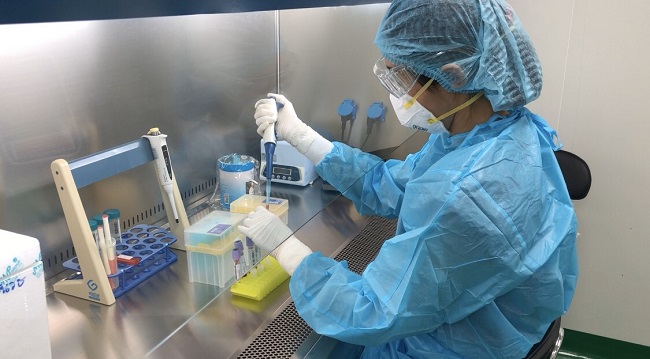COVID-19 Makes Demands for Clean Interfaces Imperative
Mike Pratt discusses how lab interfaces can impact public policy during COVID-19.
The need for clean lab interfaces to efficiently distribute medical data has been growing for years; the COVID-19 crisis has made it mission-critical. Officials rely on that information to form the country’s public health response, from a local to a national level. As we’ve talked about before, our business is data-centric, and how successful we are in defeating COVID-19 is dependent on how quickly and accurately laboratories can distribute information to their partners.
At the top of any clinician’s “most important” list is the need for integrated laboratory data. It is mission critical to correctly label, analyze or report results – failure can be deadly in normal circumstances, and when COVID-19 is involved, the ramifications are enormous. So we need a good lab interface, built with a middleware engine that allows one system to talk to another, affording the client the ability to efficiently distribute EHRs (electronic health records) between second and third parties.
Since the early 1980s, middleware in the healthcare industry has become increasingly important. As Robert Michael wrote in a 2005 issue of The Dark Report: “Middleware describes the software applications that bridge instruments and the LIS, or sit on top of the LIS to perform specific functions. Middleware is generally a fast and reliable way to automate tasks and monitor work processes in the lab.”
 Adding to that is the importance of accurate messaging to widely-used HL-7 Interfaces, which enable clinical systems to easily exchange demographic data. We’re talking the basics: a patient’s date of birth, address, plus test results. Every Electronic Medical Record (EMR) vendor and lab needs a middleware solution – and if I may brag for a moment, U.S. HealthTek’s Robert Negosian is the master of constructing middleware solutions that are flexible and cost-effective.
Adding to that is the importance of accurate messaging to widely-used HL-7 Interfaces, which enable clinical systems to easily exchange demographic data. We’re talking the basics: a patient’s date of birth, address, plus test results. Every Electronic Medical Record (EMR) vendor and lab needs a middleware solution – and if I may brag for a moment, U.S. HealthTek’s Robert Negosian is the master of constructing middleware solutions that are flexible and cost-effective.
Robert is a guru who can quickly diagnose the needs of the client and manipulate the middleware to serve that client’s unique situation. For smaller labs, we’ll provide a solution that will increase the speed and take the stress off their LIS. The analogy I like to use is to talk about my souped-up muscle car (okay, it’s imaginary, but play along). Let’s say it’s one of those cars with eight cylinders and dual exhaust. But then you hook up a trailer with three tons of rocks in it, and more rocks are being added every day. Imagine this equivalent with a lab — eventually it’ll bring the entire system to a standstill and the mangers might not know why. The only time this doesn’t happen is if the lab is not adding clients or interfaces … and if that’s the case, well, that lab has bigger problems, doesn’t it?
Own the Data
A good interface management system or company provider leverages established project management methodologies and far-reaching vendor relationships to save time and money, with the added bonus of reducing those headaches associated with delayed and overdue projects. The U.S. HealthTek model is built through building the right middleware solution, which does the heavy lifting so the LIS doesn’t have to. Our data transfer solutions are superior, but we offer another advantage: we don’t insist on owning the data like other companies do. Our philosophy is that all medical data gathered by the lab is owned by the lab. We do not enter into agreements whereby supplying a middleware solution allows us to own the data that goes through it. It’s how others “double-dip” in that they charge you for setting it up, then charge you for using your own data. When selecting a vendor, you should also be wary of additional fees down the road; if circumstances change and you need to go with another consulting group, make sure the process will be easy and low-free.
Otherwise, partner with the right team. Funny story: We recently had a company ask us for a statement of work and after we delivered it, they said, “We can get this done ourselves.” We said, great! But within a week they followed up with a signed SOW, as once they dug into it, they realized it was more complicated than it appeared. We jumped in quickly, and were happy to give them the room to be sure the relationship worked for them. The right solution adapts to the specific lab, and offers the ultimate flexibility.
The pressure of the pandemic has everybody moving to rapidly increase efficacy, that is a fact. And how you get there and who you get there with doesn’t matter as long as you succeed. Now more than ever, we need tools to meet our demand for speed and stability so our healthcare partners can focus their attention on treating patients.


